コラム
落合憲弘
John Sypal
タカザワケンジ
なぎら健壱

I first met photographer Dave Hendley back in the early 2010s on Tumblr. He first messaged me asking if he could start a “Camera Style” account for Central Saint Martins in London (https://csmcamerastyle.tumblr.com/) where he taught photography. Absolutely! Through posts and more messages, we connected over a shared interest in Japanese photography and the darkroom. We first met in person on one of his visits to Tokyo in 2012.
Once or twice a year, usually in April and October, Dave and his partner Kaori would visit Tokyo. I looked forward to each of his trips to Japan- On each of his them he and I would schedule a day for a long meander through the city with our Leicas: our Tokyo Photo Walks.
Taking pictures was part of these experiences, but much of their pleasure was our conversation and, for me, the enjoyment of spending time with someone so genuinely, classically enraptured by photography. (Dave had been photographing longer than I had been alive- for insight into his incredible career I suggest this article here:
https://whitstableviews.com/2023/01/17/in-memory-of-dave-hendley-1952-2016/
Walking together I could see how much the city meant to him- not simply its dynamism (we rarely went to crowded places to photograph) but the smaller, quieter joys he found on its backstreets.
On a beautiful Saturday in April of 2016, he I and another good friend hiked some 20 kilometers all over East Tokyo with our Leicas. A grand Tokyo Photo Walk. I didn’t know it would be our last. While taking a break at the Mister Donut in Machiya, Dave, is his humility (or perhaps Britishness) hesitatingly confided that after returning to London the following week, he would start treatment for a spot on his chest. A weighty pause. I remember saying something optimistic, something supportive. We finished our drinks and headed back out. A few kilometers later, as it was getting dark, we said our goodbyes, and made plans to meet up for dinner one more time before he left.
That July, I woke up to a message from one of his students.
It took a few moments to make sense of what I was reading. Dave, so full of life and love, had passed away.
He was gone.
Back to that April visit- before he left we met up at a pizza place in Shibuya as planned. It was an hour or two of good food and photo-chatting, albeit this time with that sad sort of weight that hangs on the hearts of everyone at any going-away party.
Oh well, we said. No worries. We’d see each other again in October.
I remember that I had to head home but Dave needed to take a taxi to the reggae club to DJ until morning. It soon arrived and, as he was getting in, I snapped one final shot- our last photo.
It's fitting, really: Dave getting into a Tokyo cab with his M4 around his neck, heading off into the night. This was last time I ever saw him.
Tokyo Photo Walk was published in May of 2016. His partner, Kaori, sent me a copy that October. Dave was gone, but in a way, he remains there in its pages. Looking through this book, I recognize several moments where I was just a meter or two away as he snapped the shutter. Dave worked smartly- he’d see something and, with a sparkle in his eye and Leica in hand, move in for a snap. He also had a way of making people at ease. You can see this in his photos: he had a presence that somehow allowed people to subtly acknowledge the importance- or at least photogenic qualities- of the moment he spotted them in.
He shot mostly with a 28mm lens- its wide-angle was fitting for his open, curious approach. Dave had experience and talent, even more importantly he had genuine love for life (and Japan). This he captured with an open heart and always-ready camera.
While writing this column I took a look back through some of our emails. It’s funny- I can still “hear” his voice in them. I want to share with you a bit of advice he sent me after a dinner in 2012- it so perfectly encapsulates his approach, authenticity, and wisdom:
“Also, what I was trying to say was that I come from a time when it was enough just to take photographs and the thinking took care of itself - so I would just follow my heart if I were you. Feedback is always subjective and contingent on your relationship with the person giving it.”
That’s exactly what it’s about. That’s the way to go.
Tokyo Photo Walk, being a small, self-published (and now post-humous) book is not available in any store, anywhere. However, it is available in its entirety online as a PDF here:
https://ualresearchonline.arts.ac.uk/id/eprint/9645/2/Tokyo%20final.pdf
If you’ve got some time, please take a look. I hope you’ll see something in the Tokyo which Dave loved and walked.
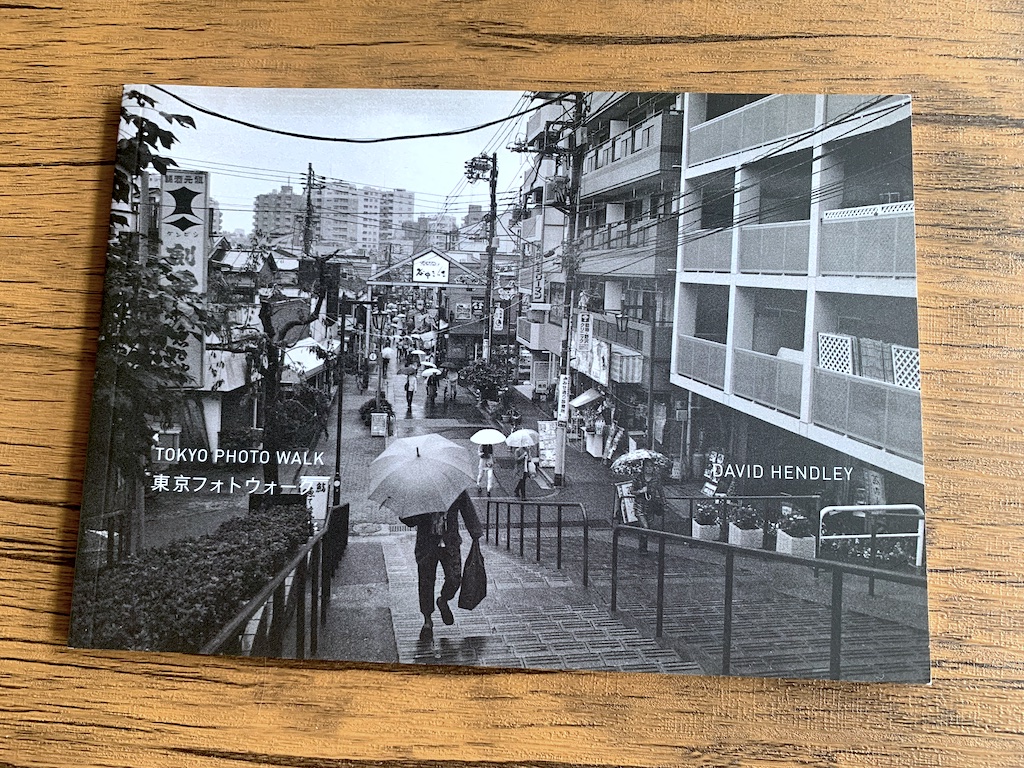
デイブ・ヘンドリーさんとの交流は2010年頃のTumblrを介してでした(Tumblrとはブログ型SNSのことです)。彼からの最初のメッセージは、写真を教えていたロンドンのセントラル・セント・マーチンズで「カメラスタイル」のアカウントを立ち上げられないかという相談でした。もちろんです! 投稿やメッセージを通じて、日本の写真や暗室といった共通の興味でつながり、2012年に彼が東京を訪れた際に初めて直接会うことができました。
年に1〜2回、だいたい4月と10月に、デイブとパートナーのカオリさんは東京を訪れ、その都度私と彼はライカを持って東京をじっくりと散策する「東京フォト・ウォーク」の日を設けていました。

写真を撮りながら歩く時間の楽しみは、彼との会話はもちろん、私にとって純粋に写真に魅了された彼と一緒に時間を過ごすことでした。デイブは私が生きているよりも長い時間、写真を撮り続けていました。
https://whitstableviews.com/2023/01/17/in-memory-of-dave-hendley-1952-2016/
一緒に歩いていると、彼にとってこの街がどれほど大切なものか。単にダイナミズムだけでなく、彼が裏通りで見つける、小さく静かな喜びを感じることができました(私たちは撮影のために人の多い場所に行くことはほとんどありませんでした)。
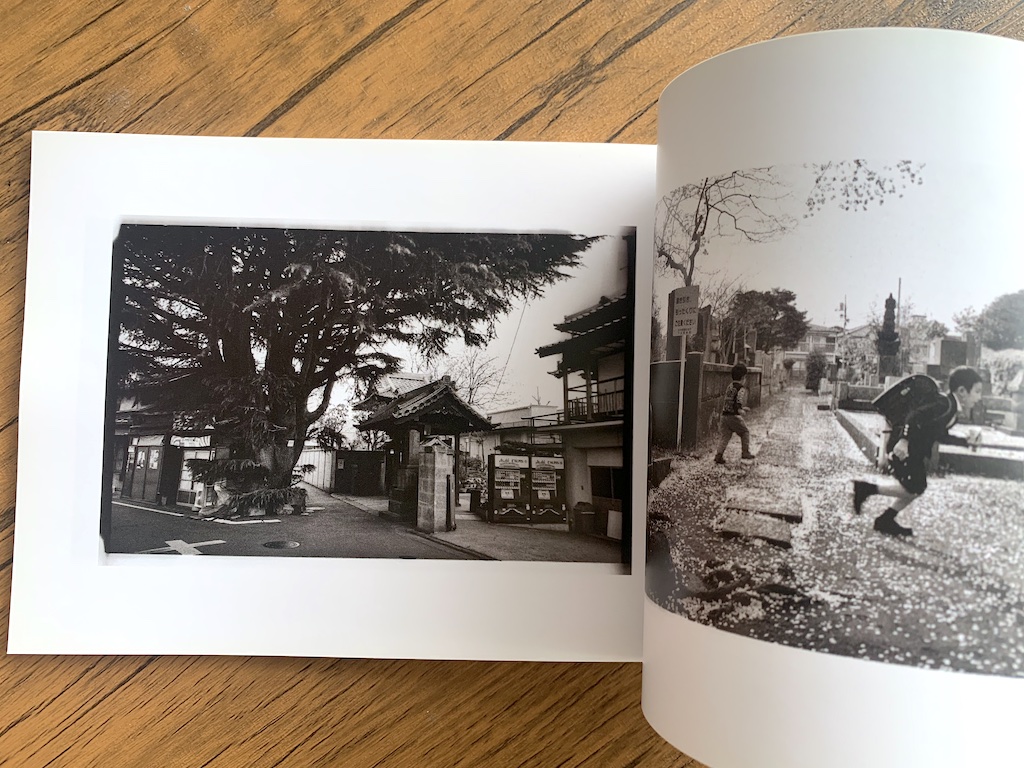
2016年4月の美しい東京日和、私と彼はライカを持って東京の東側をあちこち20キロほど歩いていました。壮大な東京フォト・ウォーク。
まさかこれが、最後になるとは思っていませんでした。
荒川区町屋のミスタードーナツで休憩しているとき、デイブは「翌週ロンドンに戻ったら、胸の治療を始める」とためらいがちに打ち明けました。重みのある間がありました。私はそれから何か楽観的な、彼を励ますような言葉を発したのを覚えています。私たちはドリンクを飲み干すと、再びカメラと外に出ました。数キロほど歩き日が暮れてきた頃、私たちは別れを告げ、彼がロンドンに帰る前にもう一度、夕食を共にする約束をしました。
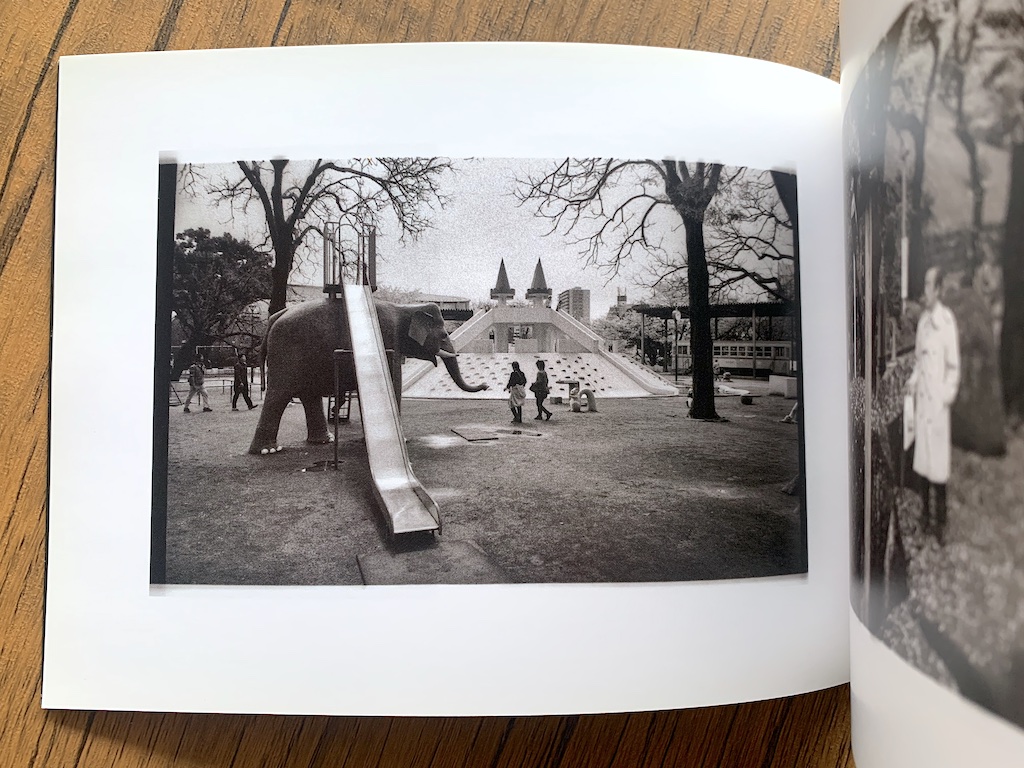
同年7月、私はデイブさんの教え子からの突然のメッセージで目を覚ましました。
何を読んでいるのか、理解するのに少し時間がかかりました。生命力と愛に満ち溢れていたデイブが亡くなったのです。
彼は逝ってしまった。
4月の東京に話を戻しますが、彼が帰る前に予定どおり渋谷のピザ屋で待ち合わせをしました。2時間ほど、おいしい食事と写真話を楽しみました。しかしその晩、送迎会に集ったみんなが悲しみに似た重みを心に抱えていました。 大丈夫だよ絶対、10月にまた会いましょう!と私は笑いながら言いました。
デイブはその後からレゲエクラブでDJをすることになっていたものの、私は家に帰らなくてはならず、彼のためにタクシーを呼びました。すぐにタクシーが到着し、彼が乗り込んだところで、私は最後の1枚を撮りました。私たちの最後の写真。
まさに「最後の写真」です。
愛機ライカ M4を首から下げて東京のタクシーに乗り込み、夜に向かっていくデイヴ。これが、私が彼を見た最後の瞬間でした。

デイブさんの『Tokyo Photo Walk』が出版されたのは2016年の5月。その10月にパートナーのカオリさんが送ってくれました。デイブは亡くなってしまいましたが、ページの中に彼は存在している。この本を見ていると、彼がシャッターを切るとき、私はほんの1、2メートルの距離にいたことがわかるのです。
デイブは、何かを見つけると、目を輝かせ、ライカを片手にシャッターを切る。かっこよく、静かに撮影していました。また、被写体を和ませる術ももっていました。彼の写真を見ているとわかるのですが、彼が見つけた瞬間の重要性、あるいはフォトジェニックな資質を、カメラを向けられた人々が自然と認めてしまうような存在感がありました。
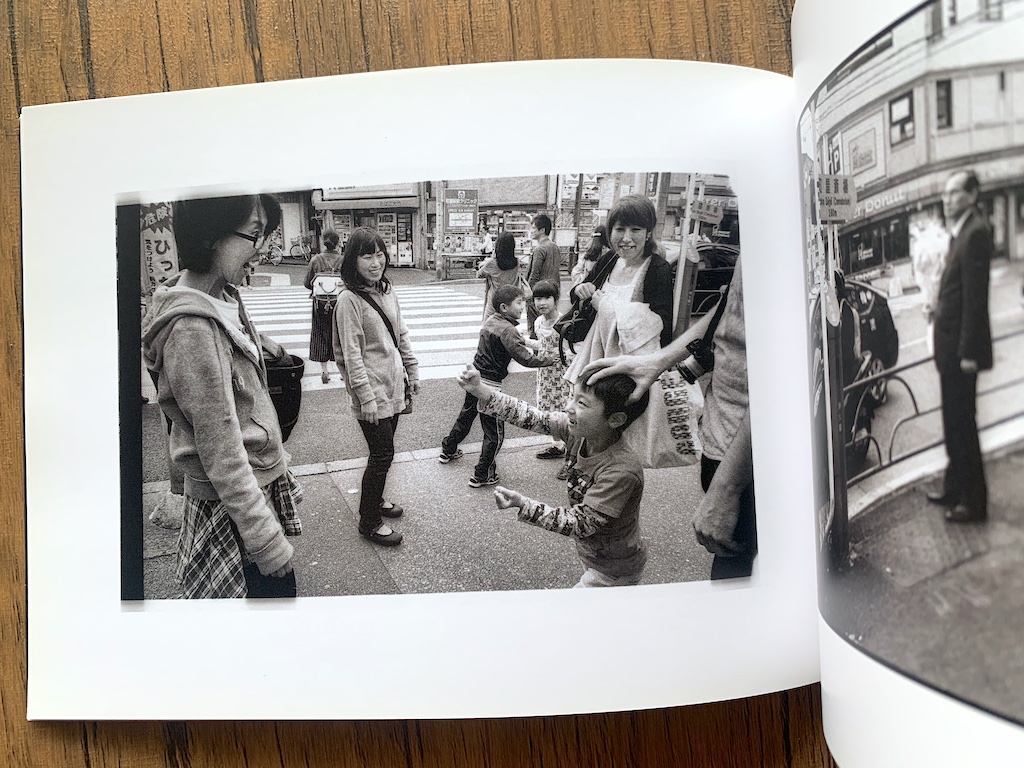
デイブは主に28mmレンズで撮影していましたが、その広角レンズは彼のオープンで好奇心旺盛なアプローチにぴったりでした。デイブには写真経験と才能があり、それ以上に人生と日本に対する純粋な愛があったように思います。彼は、オープンハートと常に準備されたカメラで、これらを撮影しました。
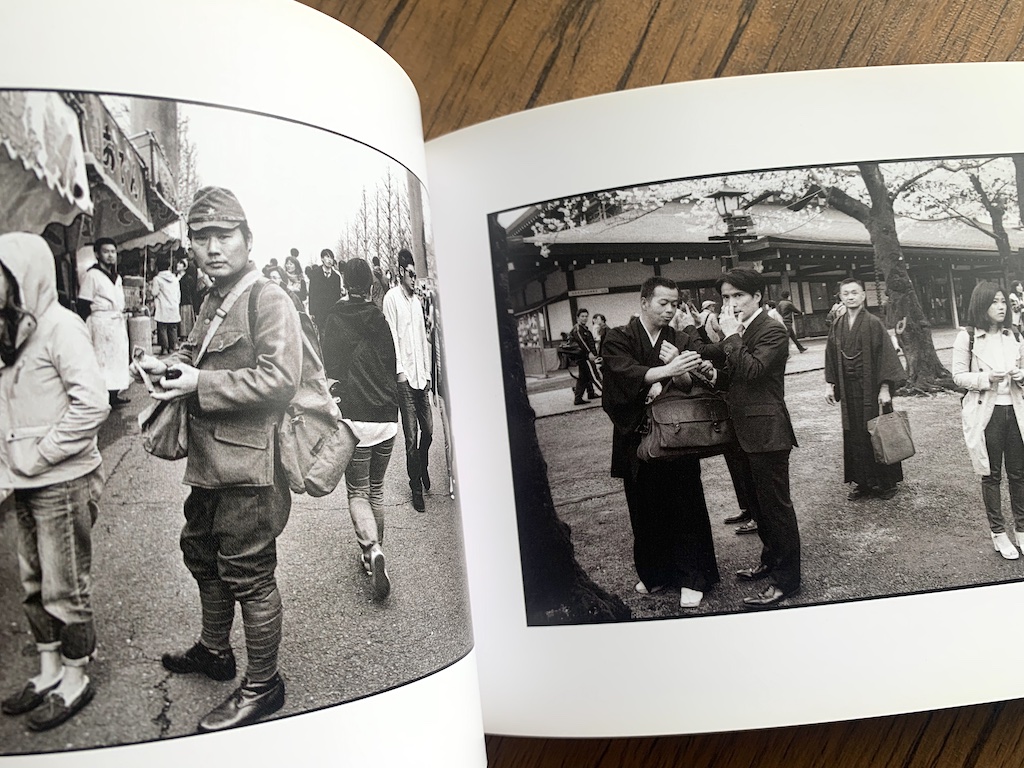
このコラムを書きながら、私たちのメールのいくつかを振り返ってみました。面白いことに、その中に彼の声が残っているのです。2012年、ある夕食の後、彼が私に送ってくれたアドバイスを紹介したい。
- 「……私は考えるよりも、ただ写真を撮るだけで十分だった時代の人間なので、写真を撮ることに対して、自分の心に従うだけでいい。フィードバックは常に主観的であり、それを与える人との関係によって左右されるものだよ」
まさに、そういうことなんです。 そういうこと。デイブ先生、ありがとう。
『Tokyo Photo Walk』は、小さな自費出版本(そして今は遺作)なので、どこのお店でも手に入れることはできません。しかし、オンラインからすべてをPDFで見ることができます。
https://ualresearchonline.arts.ac.uk/id/eprint/9645/2/Tokyo%20final.pdf
もしお時間があれば、ぜひご覧ください。デイブが愛し、歩いた東京に、何かを感じていただけると幸いです。
 26 Duets? Duels? Near-overlaps of time and Space across Tokyo. 東京の時間と空間が重なり合う写真集ツアー
2025/04/04
26 Duets? Duels? Near-overlaps of time and Space across Tokyo. 東京の時間と空間が重なり合う写真集ツアー
2025/04/04
 25 Naoki Ishikawa "TOKYO The City Where I Was Born" 石川直樹『東京 ぼくの生まれた街』
2024/01/05
25 Naoki Ishikawa "TOKYO The City Where I Was Born" 石川直樹『東京 ぼくの生まれた街』
2024/01/05
 24 山内道雄 Michio Yamauchi『TOKYO UP CLOSE』
2023/10/20
24 山内道雄 Michio Yamauchi『TOKYO UP CLOSE』
2023/10/20
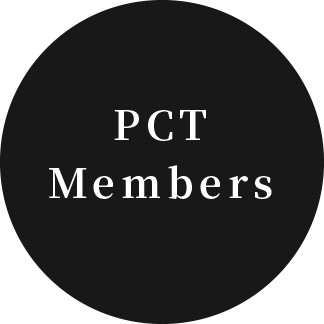
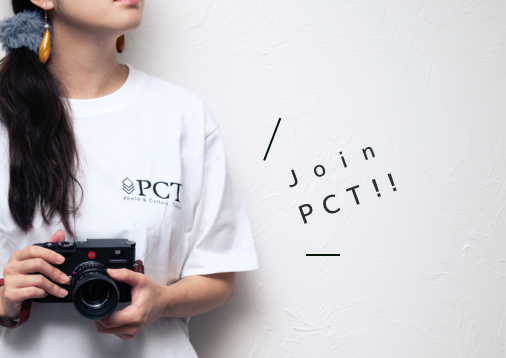
PCT Membersは、Photo & Culture, Tokyoのウェブ会員制度です。
ご登録いただくと、最新の記事更新情報・ニュースをメールマガジンでお届け、また会員限定の読者プレゼントなども実施します。
今後はさらにサービスの拡充をはかり、より魅力的でお得な内容をご提供していく予定です。
 「Photo & Culture, Tokyo」最新の更新情報や、ニュースなどをお届けメールマガジンのお届け
「Photo & Culture, Tokyo」最新の更新情報や、ニュースなどをお届けメールマガジンのお届け 書籍、写真グッズなど会員限定の読者プレゼントを実施会員限定プレゼント
書籍、写真グッズなど会員限定の読者プレゼントを実施会員限定プレゼント